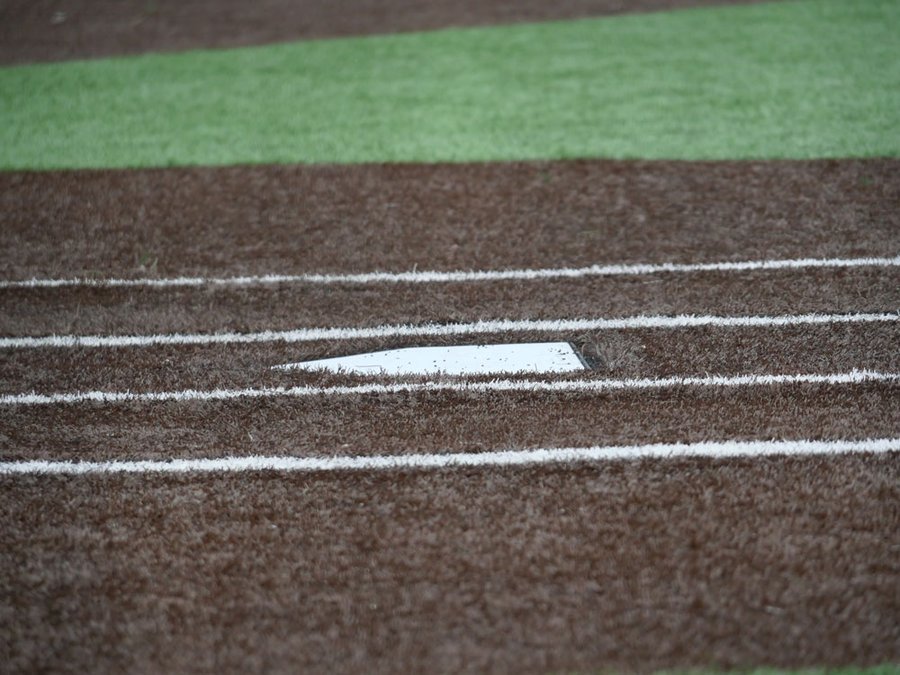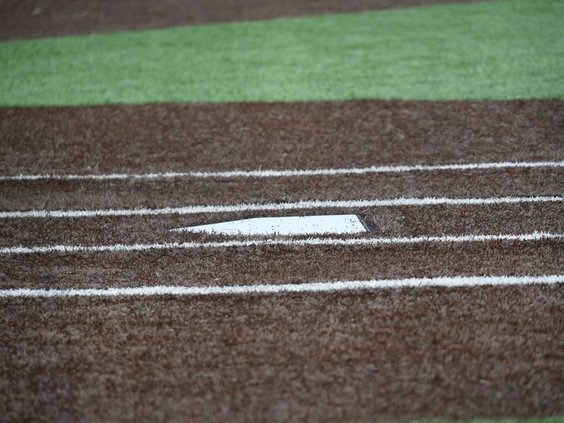Turf on baseball and softball fields isn’t a new endeavor, but its popularity is growing thanks to its versatility and lack of a need for continuous maintenance, like watering, mowing, painting lines and fixing divots and imperfections that could cause poor bounces of the ball.
MONROE — A park official is urging School District of Monroe Board members to invest upfront in artificial turf for the new softball and baseball infields at the new high school, and he is touting the sizeable commitment of private donors to help make that happen.
The district has, in recent months, announced multiple sponsorship agreements for aspects of the new Monroe High School building and grounds rapidly taking form on the east edge of town.
More artificial turf could soon produce another big sponsorship wins for the district.
At issue is whether the investment of artificial turf there will extend beyond the football stadium, where it has been planned for the new MHS campus all along. Backers of having all-turf fields told the school board during its August 11 meeting that they can secure $600,000 from a pair of sponsors, with $400,000 up-front to cover the installation of artificial surfaces.
District officials, especially, heard from a park district official — with a lifelong commitment to youth sports, including baseball and softball — during the meeting.
“Turf fields are not a cosmetic upgrade or want as some may think,” said Josh Trame, district parks and forestry supervisor. “They are long-term investments in our student athletes, our programs and our community.”
Interim Supt. Joe Monroe, said the idea of turf fields for softball and baseball has been considered off and on for some time during the building project, but may be finally be a reality, considering the potential for the donation to help offset the cost for not only installation but ongoing maintenance.
“There are a lot of games and practices that are lost to spring weather, so I think if we can look for a way to make this happen it’s in the best interest of our kids and our community,” he said. “We have major donors (that) have stepped up…”
Turf not only looks good, it reduces the time and labor of watering, cutting grass, painting lines and fixing imperfections, proponents say.
During prior board discussion the board agreed that they supported the concept, but that the costs had to be defrayed somehow, according to Monroe. That obstacle seemed formidable but advocates like Trame kept looking for a way to make the fields happen.
“Baseball and softball deserve the same level of investment and reliability of other programs,” said Trame.
For their part, board members seemed to agree to move forward with the preparation of potential sponsorship agreements for review, and final cost estimates, while emphasizing the board’s commitment to seeking outside funding and being transparent with the community about spending.
“We all support artificial turf, the concern, of course, is the dollars in our budget,” said Phil Vosberg, who is treasurer of the board. “I’m supportive of it, if it’s paid for.”


